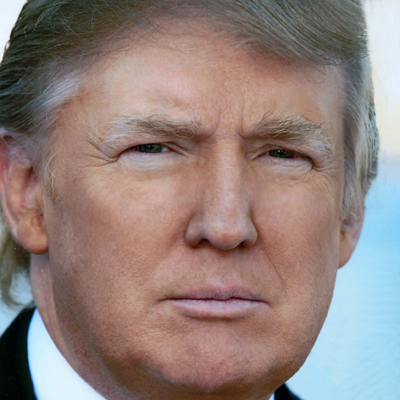Donald Trump on Housing: Big on Identifying Problems, Small on Solving Them
Donald Trump has identified housing issues of real importance, including the need for tax reform and smarter regulations. But he offers very few prescriptions for fixing these problems, and the solutions he does offer largely come instead from establishment Republicans he seemingly so loves to hate.
This piece represents the opinion of Zillow Group Chief Analytics Officer and Chief Economist Dr. Stan Humphries.

Donald Trump
Donald Trump has identified housing issues of real importance, including the need for tax reform and smarter regulations. But he offers very few prescriptions for fixing these problems, and the solutions he does offer largely come instead from establishment Republicans he seemingly so loves to hate.
Donald Trump’s tax and economic plans don’t touch much on housing directly. But based on his remarks, he clearly believes two things about homeownership. First, that our current homeownership rate of 62.9 percent is historically abnormal; and second, that the decline in homeownership since its peak in 2004 is the result of President Obama’s policies.
The current homeownership rate is not abnormal, and President Obama is not to blame for its recent fall – homeownership has bounced between 63 percent and 69 percent since the mid-1960s, and is low today largely because of demographics. But the huge growth in homeownership from the late-1990s through the mid-2000s definitely was abnormal, and was fueled by low lending standards which allowed many hopeful homeowners to realize their dreams. Unfortunately, when the mortgage came due in the middle part of last decade, those dreams turned into a global nightmare.
Today’s Dodd-Frank legislation, which Trump wants to entirely repeal, was born out of that nightmare. I agree that Dodd-Frank is way too prescriptive, and I understand change is appealing. But rather than blindly throw it all away and hope history doesn’t repeat itself, I’d be more interested in hearing about specific tweaks to Dodd-Frank, or details around a new framework altogether. An ideal system should create simpler rules that align lenders’ and borrowers’ incentives in such a way that achieving the self-interests of both produces housing stability.
Trump’s desire to simplify the tax code and close most deductions is laudable, but he’s wrong to spare the mortgage interest deduction (MID). I’ve long said the MID is poor policy – the few who take advantage of it skew rich, and the deductions do little to incentivize homeownership. If Trump is serious about removing hurdles for potential new homeowners, he should consider a tax credit for first-time home buyers aimed at those with the means to pay a mortgage, but less able to save a down payment. In order to mitigate some risk inherent in low down payment loans, this credit should demand the recipient be better qualified on other dimensions, like credit score or outstanding debt.
The impact of regulation on new home construction is one of today’s most important housing issues, and I’m glad Trump is shining a light on it – Zillow has been highlighting this relationship for some time (see here, here, here and here). Rents in the country’s most highly regulated cities increase three times faster than in less-restrictive cities, according to Zillow research, an impact felt most acutely among lower-income families. But let’s remember, not all regulations are bad – today’s housing is a LOT more energy efficient and less likely to burn down. Finding a middle ground between desirable regulations and housing affordability is necessary, and difficult. Again, Trump doesn’t offer specific proposals (notice a pattern?).
Beyond Trump’s own broad outlines, his potential administration would lean heavily on House Speaker Paul Ryan’s economic plans, which are a lot more detailed and offer several good ideas to build on.
I like that Ryan commits to adding more flexibility to housing vouchers. Vouchers are portable, but often restricted by administrative friction. Ryan aims to streamline the process, allowing the ability to move towards better opportunity while maintaining security. He also proposes combining federal housing assistance funding into a block grant to states, which I like in theory, but am wary of in practice. Packaging related programs may allow states to innovate on service delivery, but block grants often lead to diminished long-term funding, harming the ability of these programs to act as economic stabilizers during recessions when demand rises.
And unlike either presidential candidate, Ryan does somewhat address the future of Fannie Mae and Freddie Mac, but only by advocating we “wind down” the two behemoths currently backing the vast majority of U.S. mortgages. I’d love a few more details here, even if it’s just throwing support to something along the lines of the Corker/Warner plan. Doing nothing only ensures more frustration if and when Fannie and Freddie require another draw of taxpayer money from the U.S. Treasury to stay afloat in the event of regional home price declines in the near-ish future.
But Paul Ryan is not running for president. Donald Trump is. And while Trump displays a real ability to tap into current memes, igniting hope that new approaches or ideas can be found, he ultimately doesn’t demonstrate any ability to deliver on that hope.
To anyone who’s been following his campaign, this probably won’t come as a surprise.
To read Zillow Group Chief Economist Stan Humphries’ take on Hillary Clinton’s housing plans, please click here.

